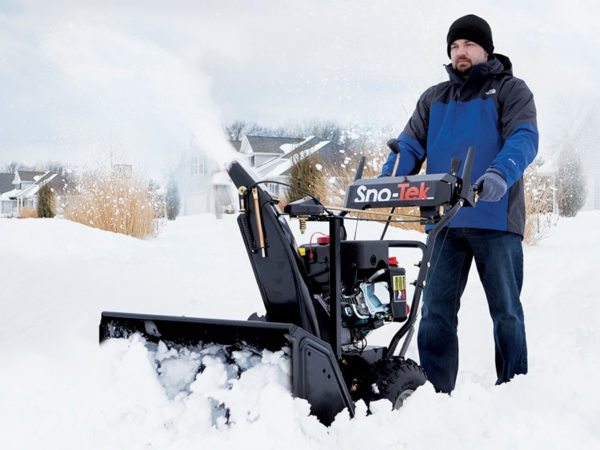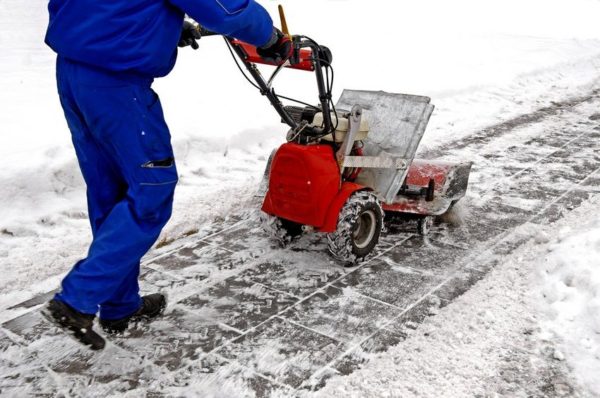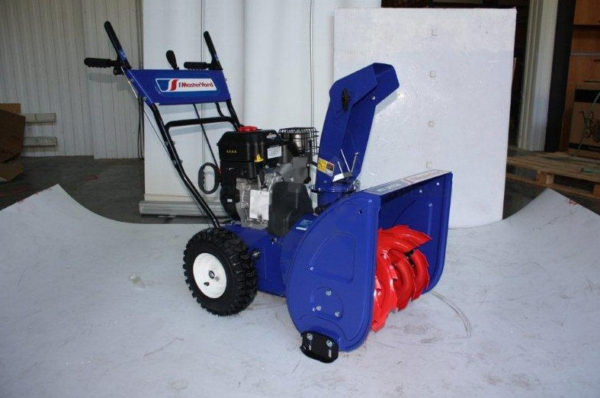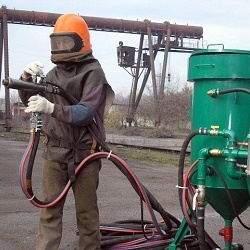How to choose a snow blower?
Snow plows in the Russian market are gaining increasing popularity. There is nothing surprising here: in conditions of constant lack of time, I want to get rid of the snow in the courtyard of a private house or cottage as quickly as possible, especially in cases where it interferes with the movement of the car. You can, of course, use a shovel, but the snowthrower will cope with it much faster and more efficiently, while not requiring a lot of strength from you.
In this material, armed with the help and knowledge of the professionals of the online store gardengear.ru, we will tell you how to choose a snow blower, and what parameters you should definitely pay attention to in order to make the purchase profitable.

Content
A couple of words about the design
Now on sale you can find several types of snow blowers, but almost all of them have a similar design.So that in the future you are not confused by the terms used, let's start with a story about the main elements that make up a typical snow machine.
Engine - it's all simple. It can be gasoline or electric. Immediately it should be said that electrical models are not so convenient, since they require constant connection to the outlet. This fact must be considered when choosing. A gasoline engine implies a gas tank and may be responsible for both the grinding of snow and the movement of the unit (the so-called self-propelled models).
Ladle - always located in front of the snow removal equipment and can be of various widths. In some models, there is a system of raising and lowering the bucket, which adds convenience when transporting the car in the intervals between cleaning and cutting off a dense trampled crust.
Screw - a rotating knife of a special shape, located inside the bucket. It is he who is responsible for the grinding of the received snow mass and its release.
Gutter - a pipe through which snow emission is made. It can be metal or plastic and always has the function of adjusting the direction and height of the emission.
Pens - used instead of the steering wheel.The most advanced models on them (or on the panel between them) are additional controls.
Now that you are familiar with the basic elements, you can proceed to the classification, because the choice of the type of car can be considered the first step to purchase.
Non self-propelled snow machines
Speaking about the engine, we have already mentioned that it can drive the unit in motion or simply be responsible for the rotation of the auger. Accordingly, non-self-propelled snow blowers belong to the second case.
All models of this type are distinguished by compactness, mobility and, importantly, as you have to push them in front of you, with a small weight. A definite plus is the fact that you can clear the whole area by easily turning around, for example, a bench or trees, and during idle times such a device will not take up much space in the garage or storage room.

The main drawback lies in the fact that such a unit can only be light, freshly fallen snow, so it’s best to start cleaning immediately after the end of the snowfall. A snow mass packed in a week, not to mention wet snow, will become a serious obstacle for it.
It is also worth mentioning the so-called electropaths - non-self-propelled devices based on an electric motor. They differ from ordinary snow blowers by their small capacity and the fact that they throw snow at them forward, and not sideways.
If you do not have the ability or desire to go out for cleaning immediately after the snowfall, you should take a closer look at the following type of snow plow.
Self-propelled snow blowers
They are more powerful and equipped not only with a wide bucket and wheel drive, but also a gearbox. It usually has up to 6 "forward" and 2 "back" speeds, allowing you to adjust the speed of movement in accordance with the amount and density of snow. All that is required of you is to hold the handles and turn them.
Most of the devices of this type are equipped with a more complex, two-stage system of snow emission. The mass, ground by the auger, is not simply pushed into the chute, but is pounced on the fan installed inside, which blows it much further.
Self-propelled cars can be divided into two types:
- wheeled,
- tracked.
What is the main difference between the two is clear from the title. Tracked models differ from the wheeled in generally higher power and greater weight.This gives them at least two advantages:
- cleaner cleaning due to better clamping to the ground;
- improved permeability (possibility of clearing ice and sloping surfaces).
But not without flaws:
- lower (about one and a half times) cleaning speed,
- the need to start the engine (and consume fuel) to roll the car from place to place in the intervals between cleaning.
Special mention deserve mini tractorwhich also move independently and can be equipped with a snow removal bucket, but this class of devices is much more versatile and complex, therefore it is somewhat incorrect to consider it in detail in the framework of this material.
Summing up the interim, we can safely advise to purchase a self-propelled wheeled snow blower. It is the most versatile and can be used with equal success both in the household for periodic clearing of a small or middle section, tracks and access roads, and utilities for daily work.

Main characteristics
To choose a good snow blower, you should know what characteristics you should pay attention to.and which are just marketing tricks.
Really important parameters include:
- Engine power and, more importantly, its torque. The higher these figures, the better the machine will cope with the work.
- The width of the bucket - the larger it is, the faster the area will be removed and, at the same time, the heavier the unit.
- The ability to turn off one of the wheels or tracks - greatly facilitates the turn by reducing the friction of one and the wheels. The ideal option is a differential, but only top models are equipped with it.
Also an important parameter is fuel consumption, but for some reason, almost all manufacturers ignore it in the official documentation. Based on our experience, we can say that for an hour of work it usually takes from 2 to 4 liters of gasoline, depending on the amount and density of snow.
But the ejection range, which many put almost in the first place when choosing, in fact, is not so important. The reason is simple: absolutely all models eject a mass of snow in an arc. Its integrity and range strongly depends on the wind, and some fine snow always flies back into the cleaned area.This parameter can be considered critical only when cleaning large areas, but for home use it is not very important.
Finally
Based on this material, even the one who encounters this technique for the first time will be able to choose a snowthrower, distinguished by convenience and quality. And before you finish, we will give you another tip: when buying, pay attention to additional features: the presence of lights, heated handles, electric starter. Let all this does not directly affect the quality of cleaning, but it can make it much more comfortable and enjoyable.

/rating_off.png)











